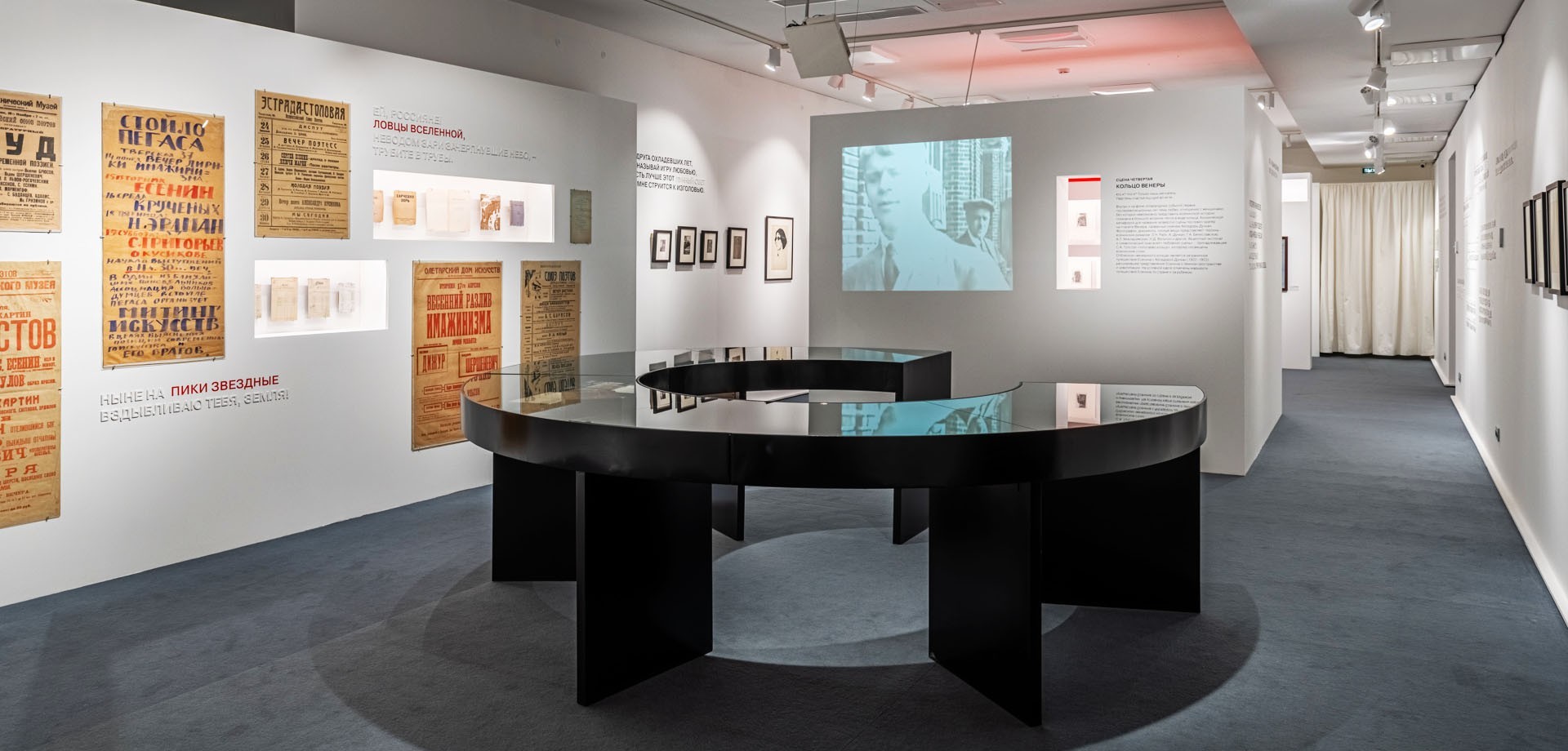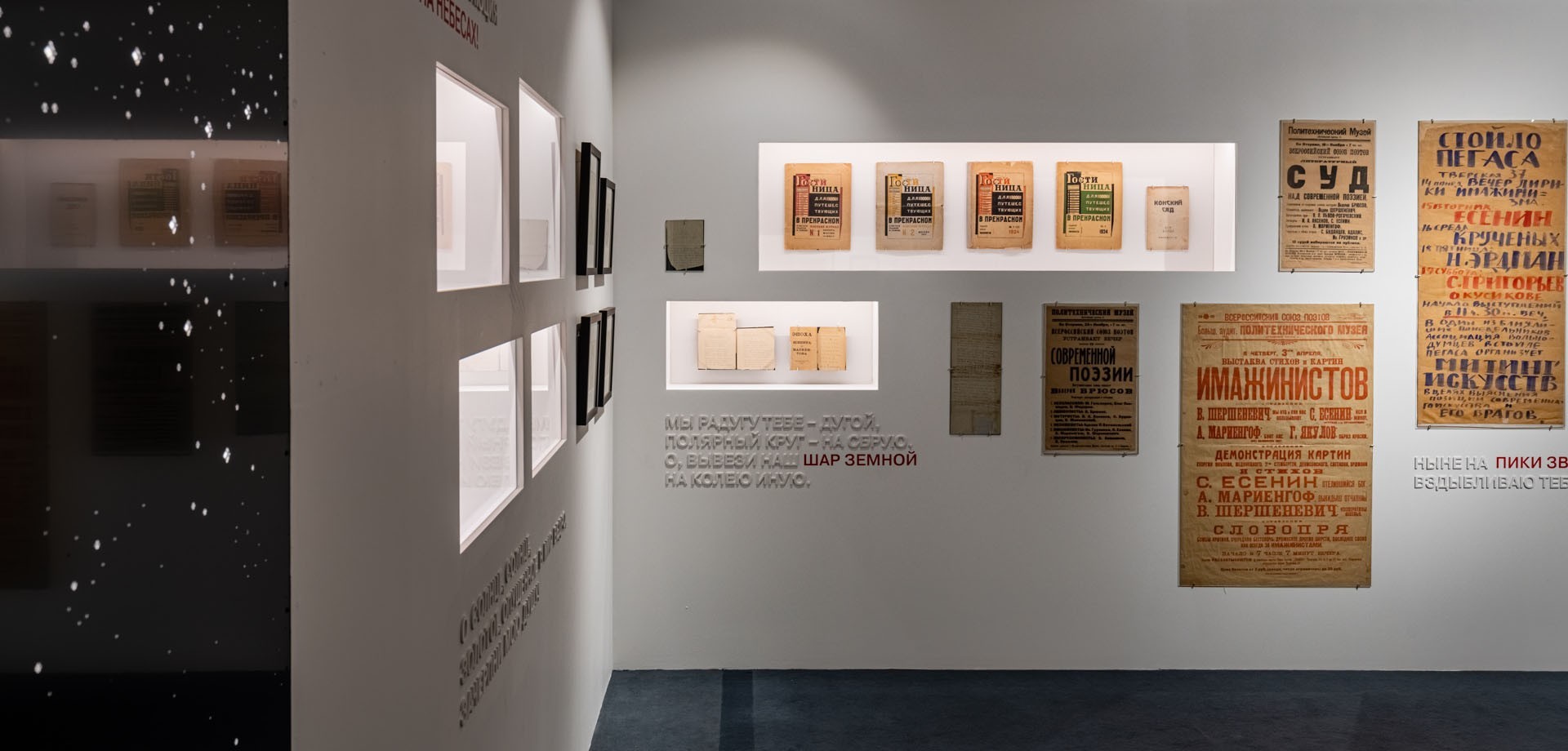The exhibition dedicated to Sergey Yesenin has been launched at The Dal State Museum of History of Russian Literature in order to celebrate the great poet’s 125 jubilee. Yesenin’s lyrics is quintessential for understanding Russian literary soul, and his poetic imagery speaks almost non-verbally to its audience. It was thus all the more important for us to create an exhibition that would give an original insight into the poet’s personal and creative biographies.
At some point we were surprised and excited to bring up the theme of cosmos. We used this association to highlight Yesenin’s hard and convoluted literary path, which he ultimately pursued without betraying his closeness to nature; throughout his messy life, he never failed to adore the starry night. This is why we have chosen stars as the central motif of the exhibition. Stars have the ubiquitous presence, as they silently guide visitors through the show. The exposition features Yesenin’s autographs, notebooks, first editions of his poems, photographs, portraits, personal belongings and audio recordings of the poet himself reading his work.
Each room marks a milestone in the poet’s life and work. The first room is all poorly lit wooden ancestral home and the murmur of trees. The starry ceiling guides visitors to the next room — the narrow corridor of poet’s hesitation between Moscow and Petrograd. The two parts of exposition are mounted in long niches and confront each other both literally and metaphorically, yet the two are integral for the poet’s journey towards maturity. The roaring installation of posters from the “Pegassus’ Crib” (Moscow literary cafe of the 1920s) and revolutionary slogans mark Yesenin’s departure from normality and his joining the imaginists community. The fragments of starry panels reflect in the mirror tabletop of the ring-shaped table. This shape is not incidental. Central to this room, which is dedicated to Yesenin’s relationships with women, is the so-called “Parrot” ring, the poet’s gift to Sofia Tolstoy. The episode dedicated to Yesenin’s working on the poem “Pougratchev”, is designed as a ward with a narrow loophole: during that period, the poet has been assessing the outcome of the Revolution for the country. The loophole opens to the previous room, with revolutionary posters, as if inviting visitors to look at this period form a different angle. The last room is all about asceticism and coldness of the tragic finale: bright colors aside, it is monochrome.
Although the image of a starry night is dominant, the overall design idea is very down-to-earth: light colors, natural linens, wooden panels and decor. Every room is also complimented with selected quotes that emphasise its distinct atmosphere.





















